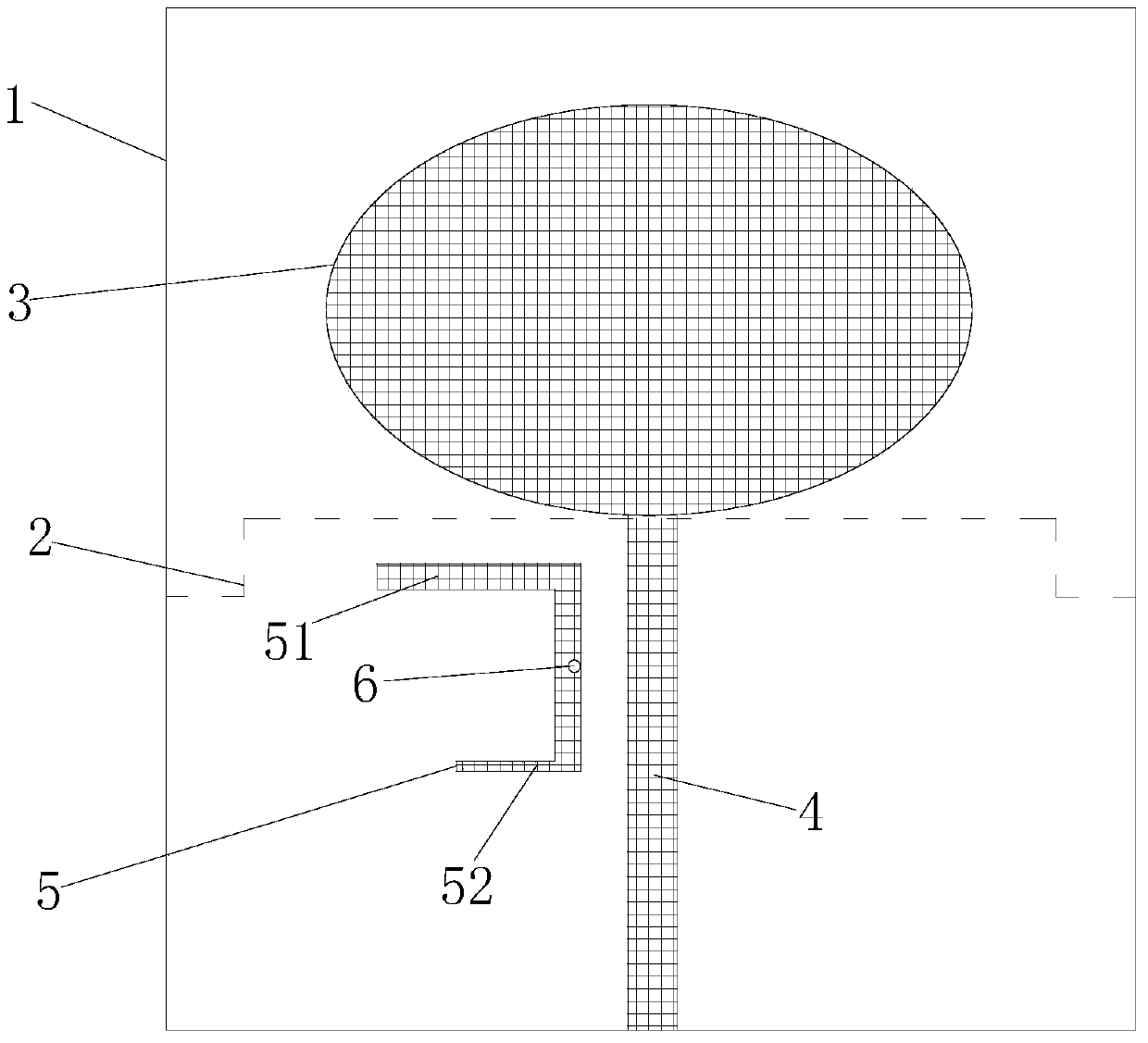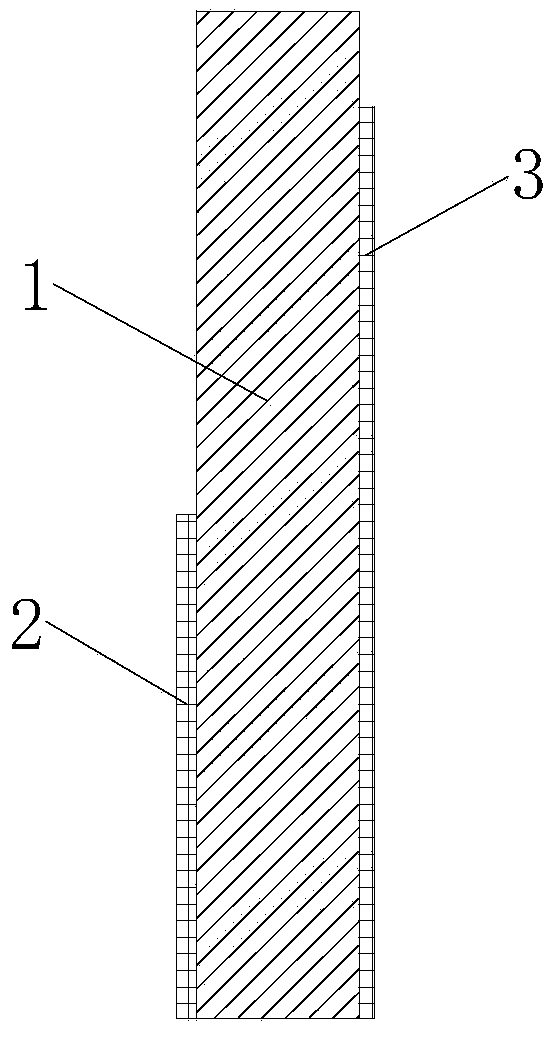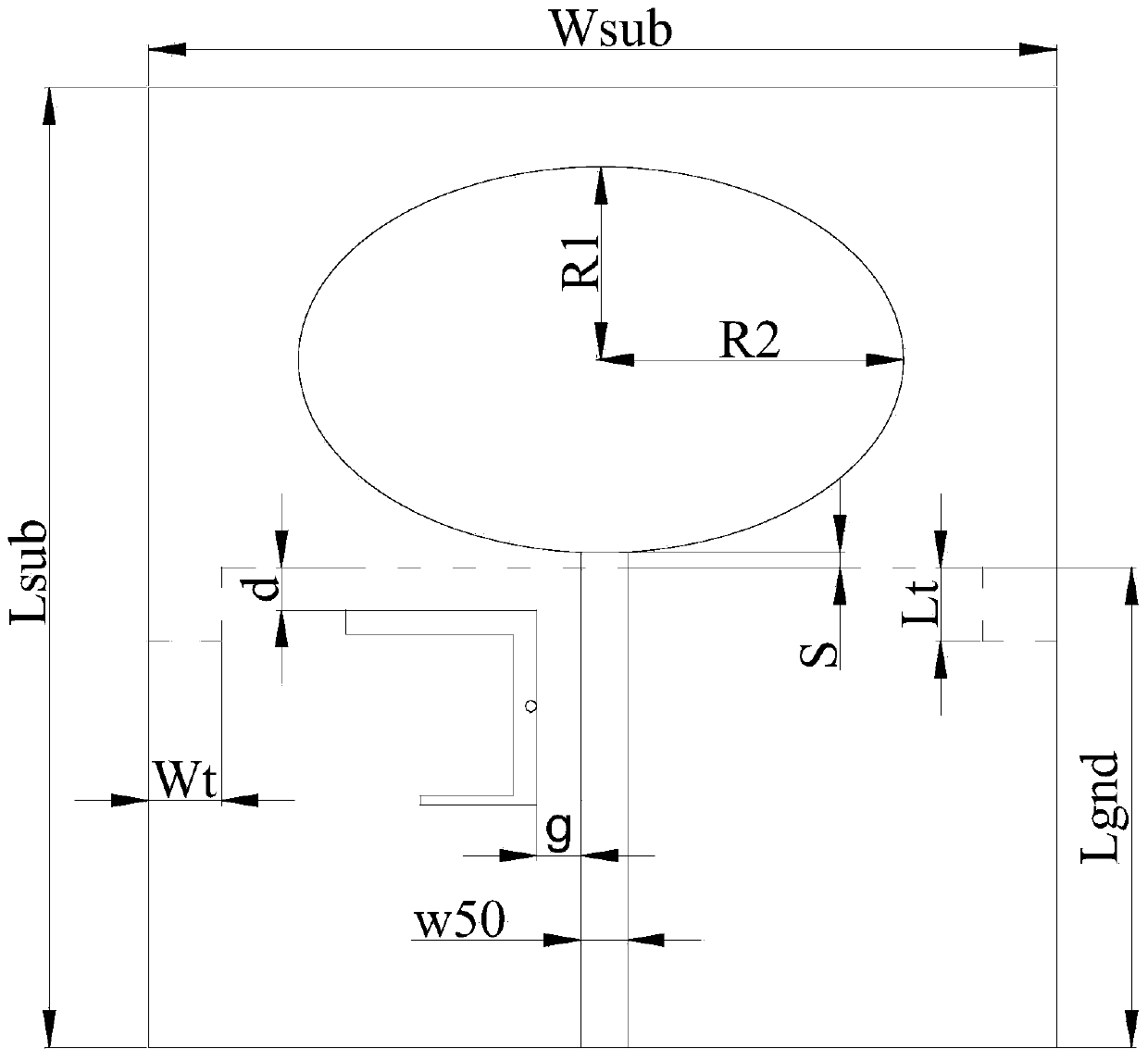Multi-notch ultra wide band antenna
An ultra-wideband antenna and notch technology, which is applied in the field of multi-notch ultra-wideband antennas, can solve the problems of ultra-wideband antenna working frequency band reduction, increase the complexity of antenna design, and cannot filter out interference, so as to reduce design costs and be easy to control , The effect of convenient processing
- Summary
- Abstract
- Description
- Claims
- Application Information
AI Technical Summary
Problems solved by technology
Method used
Image
Examples
Embodiment
[0035] The specific parameters of the dielectric substrate used in the multi-notch ultra-broadband antenna in this embodiment are relative permittivity εr=4.4 and thickness h=1.0mm. image 3 , Figure 4 It is a schematic diagram of the structural dimensions of the embodiment, and its specific geometric parameters are Wsub=38mm, Lsub=40mm, Lgnd=20mm, R1=8mm, R2=12.8mm, S=0.2mm, d=0mm, w50=1.86mm, Lt =3.0mm, Wt=3.0mm, g=1.0mm, r=0.2mm, W1=1.2mm, L1=8.0mm, W2=0.4mm, L2=4.8mm, W3=1.0mm, L3=8.2mm.
PUM
 Login to View More
Login to View More Abstract
Description
Claims
Application Information
 Login to View More
Login to View More - R&D
- Intellectual Property
- Life Sciences
- Materials
- Tech Scout
- Unparalleled Data Quality
- Higher Quality Content
- 60% Fewer Hallucinations
Browse by: Latest US Patents, China's latest patents, Technical Efficacy Thesaurus, Application Domain, Technology Topic, Popular Technical Reports.
© 2025 PatSnap. All rights reserved.Legal|Privacy policy|Modern Slavery Act Transparency Statement|Sitemap|About US| Contact US: help@patsnap.com



